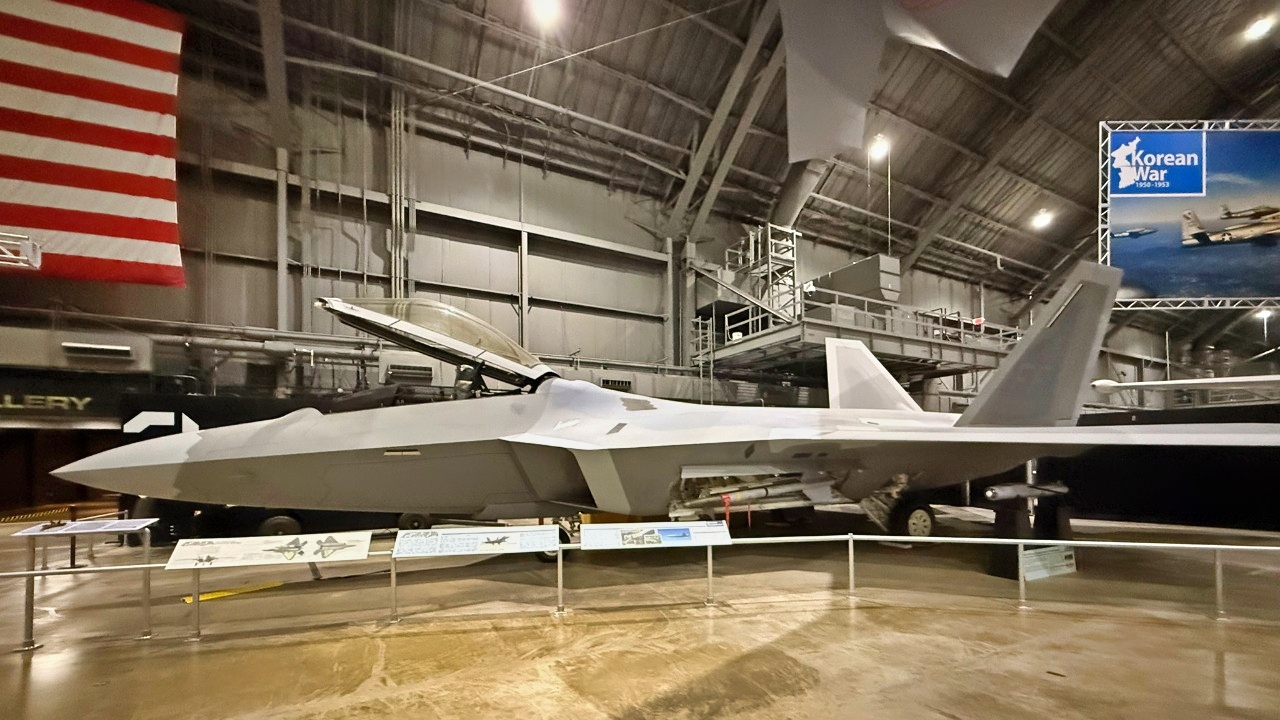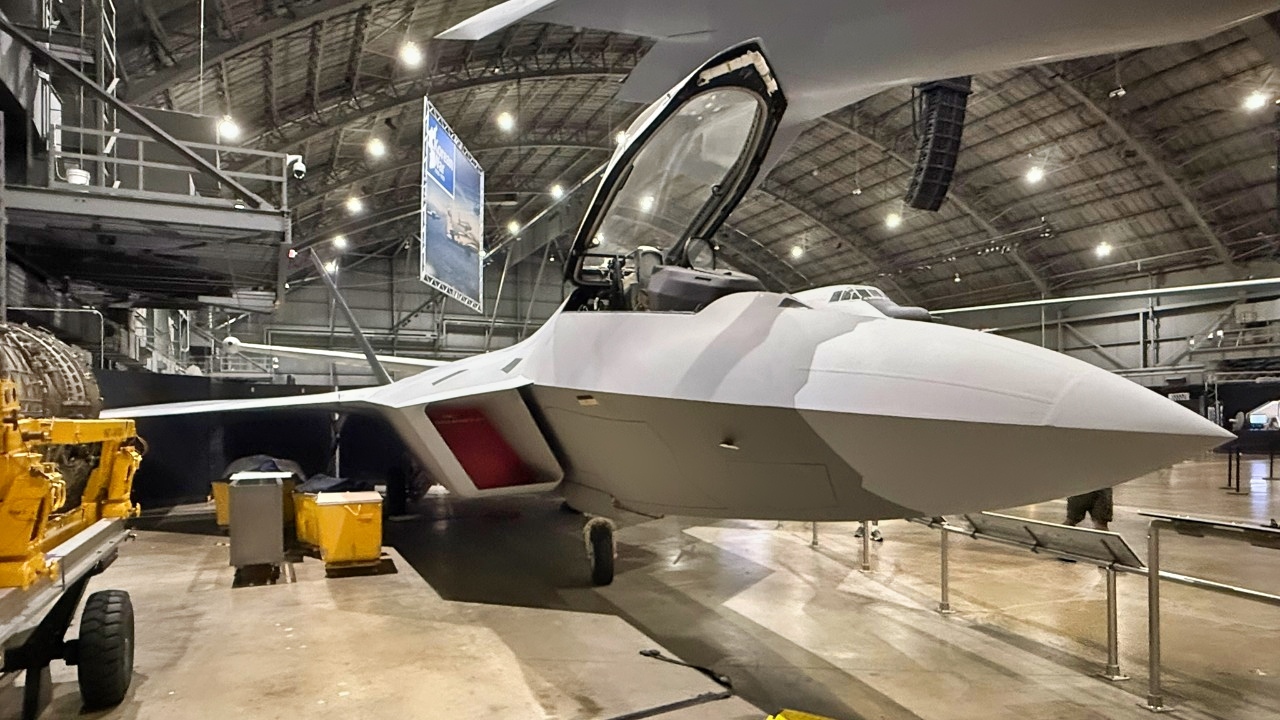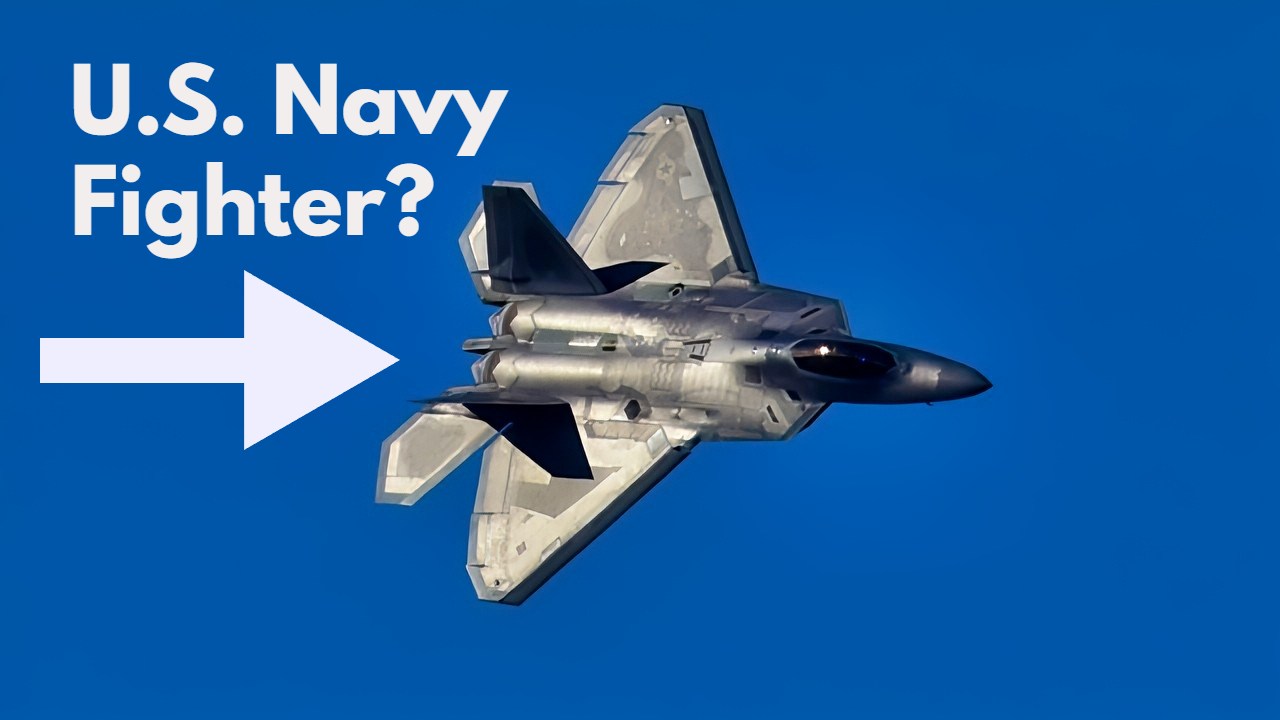Key Points and Summary – F-22N “Sea Raptor”: The Carrier Fighter That Never Was
-Long proposed as a carrier-borne derivative of the F-22, the F-22N “Sea Raptor” aimed to replace the F-14 and defend carrier groups with stealth, supercruise and the APG-77 AESA.

F-22 Raptor. This will be replaced by the F-47. Image Credit: National Security Journal.
-Navalization would have required a strengthened airframe, tailhook, folding wings, corrosion protection and beefed-up landing gear; concepts even explored variable-sweep wings, plus added fuel for range.
-Ultimately the idea died: costs soared, naval mods threatened stealth and weight, and the Navy chose the cheaper, multirole F-35C.
-Though never built, Sea Raptor thinking—stealth, sensor fusion, high-end air superiority—shaped carrier aviation plans and echoes in today’s F-35C and the coming F/A-XX fighter program.
F-22N Sea Raptor Idea: Should This Have Happened? Why Didn’t It?
The F-22 Raptor and the F-35 Lightning II represent the twin pillars of the United States of America’s 5th-generation stealth fighter jet arsenal.
Seeing as they’re both Lockheed Martin products, they also represent the twin pillars of pride and joy for that venerable aerospace firm’s famed Skunk Works division.
However, a major difference between the F-22 and the F-35 is that the latter exists in variants for the sea services—the V/STOL-capable F-35B for the US Marine Corps and the carrier-borne F-35C for the US Navy—whilst the former does not.
One may ask why this is so.
The short, oversimplified answer is that the Raptor was developed under the auspices of the US Air Force’s exclusive Advanced Tactical Fighter (ATF) program. In contrast, the Lightning II was designed for the Joint Strike Fighter (JSF) program, which is self-explanatorily.
The longer and slightly more complex answer is that a seaborne version of the F-22 was envisioned, but it never came to fruition.
National Security Journal now takes a deeper dive into the “coulda, shoulda, woulda” story (as it were) of the F-22N Sea Raptor.
Basic Premise and Promise of the F-22N Sea Raptor
The F-22, as we know it, made its maiden flight on September 7, 1997, and officially entered operational service with the USAF on December 15, 2005. However, the ATF program was actually initiated back in 1981, a solid 10 years before the Cold War ended. At some point, the Navy conceptualized a naval adaptation that would (1) replace the aging F-14 Tomcat and (2) counter evolving threats from the Soviet Navy.

F-22 Raptor Fighter National Security Journal Photo.
The Sea Raptor would have been assigned the following key mission objectives:
-Air Superiority: Dominating airspace around carrier strike groups (CSGs)
-Multi-Role Operations: Conducting air-to-ground and anti-ship strikes
-Stealth & Survivability: Evading enemy radars and missiles with low observability
-Supersonic Interception: Quickly responding to airborne and maritime threats (such as Soviet Naval Aviation’s Tupolev Tu-22M “Backfire,” Tu-95 “Bear,” and Tu-16 “Badger” bombers) without afterburner reliance
Necessary Upgrades and Modifications
As fantastic as the Sea Raptor looked on paper, and as excellent as the baseline F-22 was (and still is), some significant modifications and tweaks would have been necessary to make that warbird carrier ready, such as:
-Structural Reinforcement: A reinforced airframe (fuselage) to endure catapult launches and arrested landings; a robust tailhook was integrated for deck landings; and wings hinged for folding to optimize carrier deck space

F-22 Raptors from the 1st Fighter Wing and 192nd Fighter Wing, participate in a total force exercise at Joint Base Langley-Eustis, Virginia, Feb. 28, 2019. Both wings partnered with the 633rd Air Base Wing during the Phase I exercise to showcase their readiness and deployability of the F-22s. (U.S. Air Force Photo by Tech Sgt. Carlin Leslie)
-Navalized Flight Enhancements: Variable geometry sweep-wing (AKA “swing wing”) concept to improve low-speed carrier landings and high-speed maneuverability (thus borrowing a page from the F-14 Tomcat it was intended to replace); reinforced undercarriage (landing gear) to absorb the high-impact stresses of carrier operations; marine-environmental protections to resist saltwater corrosion on critical components
To provide high-speed interceptions of threats using only the raw power of the engine without resorting to afterburner, i.e., supercruise, the F-22N would have utilized Pratt & Whitney F119-PW-100 turbofan engines, thus enabling sustained Mach 1.5+ (1,852+ km/h; 1,150+ mph; 1,000+ knots) speeds. Presumably, fuel capacity increases were considered to offset the extra weight and range limitations, whilst the APG-77 AESA radar would have provided detection range up to 400 km (248.5 statute miles; 215.9 nautical miles)
So, What Went Wrong?
As Wiley Stickney sums it up concisely in a March 26, 2025, article appropriately titled “F-22N Sea Raptor: The Ultimate Carrier-Based Stealth Fighter That Never Was.”
“The F-22N was canceled due to high costs, complex naval modifications, and strategic shifts favoring the F-35C Lightning II. Additionally, the challenges of integrating stealth with variable-sweep wings made the design impractical for production.” (The swept wings added weight and radar signature, thus compromising stealth.)
And as ironic as it sounds with the benefit of 20/20 hindsight, the F-35C’s present expense controversies notwithstanding, it was actually the more affordable option than the F-22N, and for good measure, it provided better multi-role versatility, stealth, and carrier compatibility, even if the Sea Raptor would have been the better fighter from a pure air superiority standpoint.
That said, the notion of the F-22N still left a positive lasting legacy: “Although never built, the F-22N’s design philosophy—focusing on stealth, supercruise, and sensor fusion—has influenced the F-35C and upcoming sixth-generation carrier-based fighters, ensuring the U.S. Navy remains dominant in future naval air combat.”
Though Mr. Stickney doesn’t specify it by name, presumably Mr. Stickney is referring to the F/A-XX program when he mentions the “upcoming sixth-generation carrier-based fighters.”
About the Author: Christian D. Orr, Defense Expert
Christian D. Orr is a Senior Defense Editor. He is a former Air Force Security Forces officer, Federal law enforcement officer, and private military contractor (with assignments worked in Iraq, the United Arab Emirates, Kosovo, Japan, Germany, and the Pentagon). Chris holds a B.A. in International Relations from the University of Southern California (USC) and an M.A. in Intelligence Studies (concentration in Terrorism Studies) from American Military University (AMU). He is also the author of the newly published book “Five Decades of a Fabulous Firearm: Celebrating the 50th Anniversary of the Beretta 92 Pistol Series.”
More Military
The U.S. Navy’s Great Ford-Class Aircraft Carrier Reboot Has Arrived
The U.S. Navy’s Great Iowa-Class Battleship Reboot
Is the Ukraine War ‘Shapeshifting’ Into the Vietnam War?
China’s Great J-20 Mighty Dragon Stealth Fighter Reboot Has Arrived










